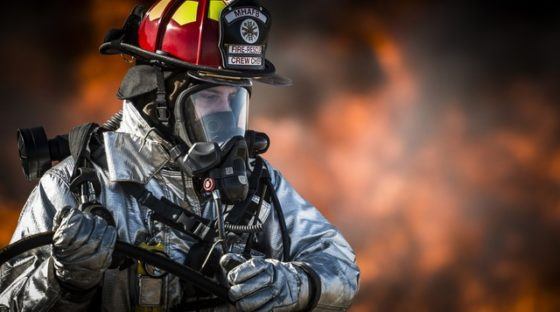“process arsonist” – Google Search
I was talking with someone a few weeks back about the analogy of “fire fighting” in a workplace (something that applies in factories and hospitals… any workplace, basically). Typically problem solving involves just fixing the immediate problem. For example, if an item is missing (a part for assembly or a medication for a patient), the fire fighting approach stops when we “put the fire out” meaning we can now build our product or treat our patient.

Maybe this is a bad analogy, showing we don't know much about fire fighting (I would suspect). Does a fire crew all just leave once a fire is doused, or does somebody stay to investigate the root cause? Do they see what can be learned to prevent fires at other places? I bet they do. Can anyone shed some light on true “fire fighting?” Are we being unfair to fire fighters when we use this analogy in the workplace? If you know more about REAL fire fighting, please click on “comments” to share your thoughts.
The knock on workplace fire fighting is that we don't stop to analyze the root cause, nor do we focus on future prevention. When a part or medication is missing, do we (when we have a moment) stop and figure out WHY that happened (not WHO messed up)? Do we stop to improve the process so it can't happen again?
Thinking about medications that go missing in a nursing unit. we might ask questions like:
- Was there not a dedicated, well labeled location for that patient's medications?
- Is there not a standardized process for what to do with medications when they arrive from the pharmacy?
- If this was a stocked medication, does our standard inventory level need adjusting?
- Did the pharmacy have a slow delivery process? If so, what can be done to improve that process?
Depending on the particulars, there are MANY things that can be done after the medication has been found. Now, once the “fire” is out (we have the medication), we might have to first continue our value adding work (giving the medication to the patient). We might not have the luxury of immediately “stopping the line” to get a problem solving team together.
But, I bet later that day we would have some time to work on the process. We might identify a countermeasure to try, or we might better document the problem, setting it aside until a kaizen team can work on it, if it's a bigger problem. Simple fixes should be done immediately, but bigger fixes might have to wait. Such is life.
One other topic that came up was how some people LOVE fighting workplace fires. They get a rush from it. They're the hero. If we fix the process, maybe that person loses their chance to be a hero. Maybe they have less of incentive to be a part of the fix (of course, we have to let them find other ways to feel valuable, since fixing the process is important for the customer — our patient).
Not participating in fixing root causes is one thing. The person I was talking to asked if some people purposefully create problems (or allow them to happen) so they can fix them. I asked, “that would be a process arsonist then, right?” I'd like to think that doesn't happen much in workplaces, yet alone hospitals.
I did a google search for the term “process arsonist” and surprisingly couldn't find any references. Did I coin a new term?? Have you ever seen a “process arsonist”?
Please scroll down (or click) to post a comment. Connect with me on LinkedIn.
Let’s build a culture of continuous improvement and psychological safety—together. If you're a leader aiming for lasting change (not just more projects), I help organizations:
- Engage people at all levels in sustainable improvement
- Shift from fear of mistakes to learning from them
- Apply Lean thinking in practical, people-centered ways
Interested in coaching or a keynote talk? Let’s talk.
Join me for a Lean Healthcare Accelerator Trip to Japan! Learn More










Hey Mark, I was a firefighter for awhile and I can confirm that yes, in addition to actual fire suppression activities firefighters also do fire investigation after the fact. There are “fire watch” crews that will stick around after the fire has been knocked down to prevent the fire from flaring up again (depending on the departments manpower).
Additionally, most fire departments will do preventative work such as public education and (in woodsy areas like mine) brush abatement (where we send crews out to do controlled burns, and good old pick and shovel work to clear ground).
Dan, thanks for the comment. I figured we were selling firefighters short in that analogy!
We have never used the term process arsonist, but there are always these little workarounds, in German – kleiner Dienstweg. The thing you have to do is ask why are we bypassing the system? Either because the system is broken and should be fixed or more often someone is too lazy and doesn’t do their required work and push it down stream in hopes that someone else will do their work.
Anita Tucker has a great series of publications on the ‘fire fighting’ phenomenon in hospitals, but calls it ‘first-order problem solving.’
http://opim.wharton.upenn.edu/~tuckera/pubs.html
The term I have always used is “putting out fires.” As Dan pointed out, firefighting is much, much more.
Two reasons I am aware of for managing this way:
1) It is easier to manage by “emergency.” Rather than plan, make decisions, and execute. To make a novice analogy to firefighters, when actually putting out a fire, all resources are channeled to that moment. Things such as planning, budgeting, training, etc. are set aside until the fire has been put out.
2)Demonstration of worth. In any are that requires maintenance, the end users often see no value if they do not encounter the occasional emergency. Again, with the firefighter analogy; if all firefighters educated and prevented so well that fires were a rarity, some genius would decide to shut down all the fire stations (and wonder why their city burned to the ground after they completely got rid of the fire fighters).
[…] productivity as a knowledge worker that it makes me dizzy… How much of our days are spent in process firefighting instead of building processes, people and relationships with customers? Even a little is too much. […]
Comments are closed.